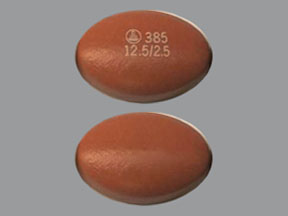Empagliflozin / linagliptin / metformin Side Effects
Medically reviewed by Drugs.com. Last updated on Sep 7, 2023.
Applies to empagliflozin / linagliptin / metformin: oral tablet extended release.
Warning
Stop taking this medicine and call your doctor at once if you have signs of a serious side effect, such as severe stomach pain (may spread to your back), vomiting, tiredness, or trouble breathing.
Tell your doctor if you are sick with vomiting or diarrhea, or if you eat or drink less than usual.
Get emergency medical help if you have symptoms of lactic acidosis such as unusual muscle pain, trouble breathing, irregular heartbeats, or if you feel very weak.
This medicine can cause serious infections around the penis or vagina. Get medical help right away if you have burning, itching, odor, discharge, pain, tenderness, redness or swelling of the genital or rectal area, fever, or if you don't feel well.
Get emergency medical help if you have signs of an allergic reaction: hives, itching, flaking or peeling skin; trouble swallowing, difficult breathing; swelling of your face, lips, tongue, or throat.
Seek medical attention right away if you have signs of a serious genital infection (penis or vagina): burning, itching, odor, discharge, pain, tenderness, redness or swelling of the genital or rectal area, fever, not feeling well. These symptoms may get worse quickly.
Stop taking this medicine and call your doctor at once if you have:
-
a light-headed feeling, like you might pass out;
-
severe or ongoing pain in your joints;
-
lactic acidosis--unusual muscle pain, trouble breathing, stomach pain, vomiting, irregular heart rate, dizziness, feeling cold, or feeling very weak or tired;
-
serious skin reaction--itching, blisters, breakdown of the outer layer of skin;
-
ketoacidosis (too much acid in the blood)--nausea, vomiting, stomach pain, confusion, unusual drowsiness, or trouble breathing;
-
pancreatitis--severe pain in your upper stomach spreading to your back, nausea and vomiting;
-
dehydration--dizziness, confusion, feeling very thirsty, less urination;
-
signs of a bladder infection--pain or burning when you urinate, blood in your urine, pain in pelvis or back; or
-
symptoms of heart failure--shortness of breath (even while lying down), swelling in your legs or feet, rapid weight gain.
Common side effects may include:
-
stomach pain, diarrhea, constipation;
-
a bladder infection;
-
headache; or
-
cold symptoms such as runny or stuffy nose, sneezing, sore throat.
This is not a complete list of side effects and others may occur. Call your doctor for medical advice about side effects.
For Healthcare Professionals
Applies to empagliflozin/linagliptin/metformin: oral tablet extended release.
General
The most commonly reported adverse reactions have included upper respiratory tract infection, urinary tract infection, nasopharyngitis, diarrhea, constipation, headache, and gastroenteritis.[Ref]
Metabolic
Dose-related increases in low-density lipoprotein cholesterol (LDL-C) were observed in patients treated with empagliflozin; increases of 2.3%, 4.6%, and 6.5% occurred in patients treated with placebo, empagliflozin 10 mg, and empagliflozin 25 mg, respectively. Mean baseline LDL-C level increases of 90.3 to 90.6 mg/dL were observed.
Empagliflozin/linagliptin/metformin:
-Uncommon (0.1% to 1%): Hypoglycemia
Empagliflozin:
-Common (1% to 10%): Dyslipidemia
-Postmarketing reports: Ketoacidosis
-Common (1% to 10%): Increased uric acid
Metformin:
-Common (1% to 10%): Subnormal vitamin B12 levels
-Postmarketing reports: Lactic acidosis
Empagliflozin, Linagliptin, or Metformin
-Postmarketing reports: Ketoacidosis
Renal
Empagliflozin:
-Frequency not reported: Increased serum creatinine, decreased eGFR
-Postmarketing reports: Acute kidney injury
Hypersensitivity
Linagliptin:
-Frequency not reported: Hypersensitivity (urticaria, angioedema, localized skin exfoliation, or bronchial hyperreactivity)
Empagliflozin, Linagliptin, or Metformin
-Postmarketing reports: Hypersensitivity reactions including anaphylaxis, angioedema, and exfoliative skin conditions
Musculoskeletal
Empagliflozin:
-Common (1% to 10%): Arthralgia
Linagliptin:
-Frequency not reported: Myalgia
Empagliflozin, Linagliptin, or Metformin
-Postmarketing reports: Severe and disabling arthralgia, rhabdomyolysis
Dermatologic
Empagliflozin, Linagliptin, or Metformin
Postmarketing reports: Bullous Pemphigoid, skin reactions (e.g., rash, urticaria)
Gastrointestinal
Empagliflozin / linagliptin / metformin:
-Common (1% to 10%): Diarrhea, constipation, gastroenteritis
Empagliflozin:
-Common (1% to 10%): Nausea, thirst, polydipsia
Linagliptin:
-Common (1% to 10%): Increased lipase levels
-Postmarketing reports: Acute pancreatitis, including fatal pancreatitis
Metformin:
-Common (1% to 10%): Nausea, vomiting, flatulence, abdominal discomfort, indigestion
Empagliflozin, Linagliptin, or Metformin
-Postmarketing reports: Mouth ulceration, stomatitis
Cardiovascular
Empagliflozin / linagliptin / metformin:
-Common (1% to 10%): Volume depletion (hypotension, syncope)
Respiratory
Empagliflozin / linagliptin / metformin:
-Very common (10% or more): Upper respiratory tract infection (up to 10.3%)
-Common (1% to 10%): Nasopharyngitis
Linagliptin:
-Common (1% to 10%): Cough
Hepatic
Empagliflozin, Linagliptin, or Metformin
Postmarketing reports: Cholestatic, hepatocellular, and mixed hepatocellular liver injury
Other
Metformin:
-Common (1% to 10%): Asthenia
Hematologic
Empagliflozin:
-Common (1% to 10%): Increased hematocrit
Genitourinary
Empagliflozin / linagliptin / metformin:
-Very common (10% or more): Urinary tract infection (up to 10.2%)
Empagliflozin:
-Common (1% to 10%): Genital mycotic infections, increased urination, male genital infections
Empagliflozin, Linagliptin, or Metformin
-Postmarketing reports: Urosepsis, pyelonephritis, necrotizing fasciitis of the perineum (Fournier's gangrene)
Nervous system
Empagliflozin / linagliptin / metformin:
-Common (1% to 10%): Headache
More about empagliflozin / linagliptin / metformin
- Check interactions
- Compare alternatives
- Dosage information
- During pregnancy
- Drug class: antidiabetic combinations
- En español
Patient resources
- Empagliflozin, linagliptin, and metformin drug information
- Empagliflozin, linagliptin, and metformin (Advanced Reading)
Other brands
Professional resources
Other brands
Related treatment guides
References
1. Product Information. Trijardy XR (empagliflozin / linagliptin / metformin). Boehringer Ingelheim. 2020.
Further information
Always consult your healthcare provider to ensure the information displayed on this page applies to your personal circumstances.
Some side effects may not be reported. You may report them to the FDA.

